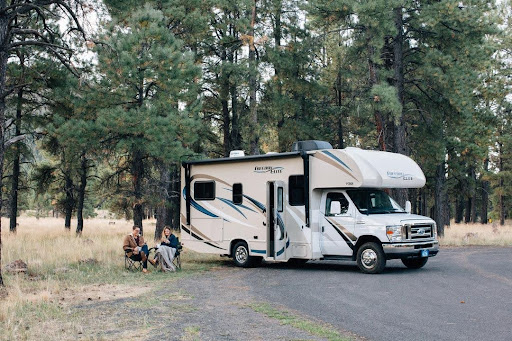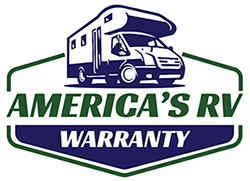
Buying a recreational vehicle is an adventure. RV life delivers the freedom to explore and travel at your own pace with the comforts of home. You may dream of weekend trips with family. Maybe full-time solo RV living is more your speed. Either way, there’s a rig to match your vision. However, picking the best one can feel daunting. There are so many types, sizes, features, and prices to look over.
It all comes down to research. Consider your lifestyle, budget, travel plans, and other needs. Let these RV shopping tips guide you in choosing the right RV for your journeys.
First, identify which type of unit meets your needs. Each variety offers custom features for different travels and lifestyles. Here’s a summary of the most common RV categories:
Now that you know about the different RV types, here are the main factors to help narrow down your decision:
First, the hard work. You'll need to create a realistic budget. Include the vehicle's upfront cost along with ongoing expenses that come with ownership. These expenses include fuel, insurance, maintenance, campgrounds, and storage.
Keep in mind that RVs have a wide range of prices. A simple pop-up camper might cost a few thousand dollars. Luxury motorhomes can go for several hundred thousand dollars. Be practical about what you need and what fits within your financial limits.
Think about who you will be with and everyone's lifestyles. Your personal preferences and trip duration should also weigh in.
Smaller RVs, such as Class B camper vans, are compact. They work well for solo travelers or couples. With their small size, they are easy to drive and can fit into most parking spaces. But they lack the personal space and amenities of bigger units.
Larger RVs include Class A motorhomes or fifth wheels. They tend to offer more living space and have more storage and luxury perks. They are ideal for families or long-road trippers. However, they may be tricky to maneuver. They also require more maintenance.
When considering the layout, think about your needs. Take into account sleep spaces, kitchen size, bathrooms, and storage. For families, bunk beds or multiple sleeping areas might be a priority. Awning and outdoor kitchens suit RVers who enjoy time outside.
Make a list of your top priorities. It should comprise the features most important to you and help you avoid overspending on unnecessary extras.
You can buy an RV from a dealership or an individual seller. Each has pros and cons:
Dealerships offer a broad range of inventory and RV financing options. They may also include warranties, which can save you repair money down the line. Yet, the prices at RV dealerships are often higher than those of individual sellers. They may also try to upsell you on extra features or services.
Buying directly from an individual can save you money. Their prices tend to be lower, but you still need to be cautious and do your due diligence.
Examine the rig carefully and get the RV maintenance records. This way, you can avoid purchasing a vehicle with hidden issues. This info will also give you leverage when negotiating the price. Finally, have a pro inspect it before you complete the sale.
Unless you’re paying cash, you’ll need to research financing options to fund your purchase. Numerous banks, credit unions, and dealerships provide loans just for RVs. These loans can have longer terms than traditional auto loans, making monthly payments easier to manage. Keep these financing tips in mind:
When you buy an RV, financing can get tricky as some lenders have age or mileage limits on their loans. Be prepared to provide detailed information.
Whether you’re buying new or used, always get a thorough inspection. New RVs can have factory defects while used RVs can have problems you won't spot right away. Hire a professional RV inspector who can look at the vehicle in detail. Key areas include:
RVs need specialized insurance policies for coverage on the road. Remember to protect your investment with an extended warranty plan. America’s RV Warranty lets you enjoy your adventures worry-free. We cover costly repairs while providing peace of mind.
Owning an RV isn’t just about the initial purchase price. There are ongoing RV costs to consider:
Specialized RV insurance differs from standard car insurance as it must cover the unique needs of RVs. Factors such as the RV’s class (Class A, B, or C) and its overall value will influence the cost. Full-time RV users may have to pay higher premiums for better coverage. In contrast, occasional users might pay less.
When you own an RV, routine upkeep is a must — it holds your vehicle in peak condition while protecting you on the road. Routine maintenance includes tire replacements (which can add up for larger RVs) as well as brake maintenance to handle the rig's weight. In addition, roof assessments help stop leaks and water damage. All costs can differ based on the RV's size and type, ranging from a few hundred to several thousand dollars a year.
An RV needs a home when not in use. If you don't have the room on your personal property, you'll need a storage facility. The cost of RV lodging hinges on location and storage type, including indoor, outdoor, climate-controlled, and covered. And be aware that extra costs can add up quickly. This is especially true for larger RVs needing more space.
Fuel costs, as always, can add up. Fuel for large RVs, particularly, tends to be costly. Due to their size and weight, these vehicles are less fuel-efficient.
When you plan trips, budget carefully for fuel expenses. Long journeys or frequent travel can really affect your bottom line.
Which fuel type is right for you? Diesel engines are more fuel-efficient. They are better for heavy RVs and great for towing, but they cost more upfront. Gas engines are cheaper and easier to refuel. Your travel plans and RV type will help you decide.
Before completing your purchase, use this checklist for a smooth process:
Having an RV means endless adventures. Whether you're off for a weekend getaway or diving into full-time RV life, picking the right RV can lead to great memories. Follow this guide for a smooth buying experience. It will help you feel confident in your decision.
However, unexpected repairs can be costly, and protecting your RV with a warranty is a wise choice. At America’s RV Warranty (ARW), we provide extended warranty plans that cover major problems, such as engine breakdowns, water system failures, slide-out issues, and electrical malfunctions. We also offer roadside assistance, tire coverage, wheel protection, and trip interruption coverage.
Start your RV adventure today and get a free personalized quote for an extended warranty at America's RV Warranty.
